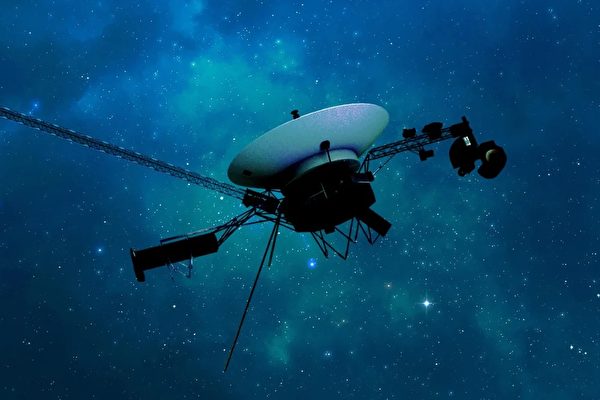NASA announced recently that its farthest spacecraft from Earth, Voyager 1, has successfully transmitted scientific data for the first time since last November when a malfunction prevented it from sending back useful information. After multiple remote repair stages by scientists, the spacecraft is now back to sending data from space.
In November last year, a computer glitch rendered Voyager 1 unable to transmit readable data back to Earth. The telemetry modulation unit of the Flight Data System was just repeatedly sending an unidentifiable code.
The Voyager mission team managed to creatively restore communication with the spacecraft, allowing it to send engineering data back to Earth’s mission control center in April, reporting on the health and status of the probe.
However, the data from the four scientific instruments on Voyager 1 continued to puzzle researchers. These instruments are used to study plasma waves, magnetic fields, and particles. This information is crucial as it can show scientists how particles and magnetic fields change as the spacecraft travels further.
In a press release on June 13, NASA stated that on May 19, the Voyager team executed the second step of the repair process by issuing a command to start transmitting scientific data. While two instruments immediately resumed normal operation, the other two required additional work. Now, all four instruments are returning usable scientific data.
Although Voyager 1 has resumed its scientific research, further work is needed to mitigate the impact of the problem. Engineers will also resynchronize the timing software in the probe’s three onboard computers to execute commands at the right time.
According to CNN, Voyager’s mission experts spent considerable time employing unconventional approaches to decode the spacecraft’s garbled signals. They managed to identify the issue: 3% of the flight data system’s memory was corrupted.
They discovered that a chip responsible for storing part of the flight data system’s memory was malfunctioning, causing loss of code including crucial computer software code, rendering Voyager 1’s science and engineering data unusable.
Unable to repair the chip, the team devised a solution by storing the affected code from the chip at different locations within the flight data system’s memory. As there wasn’t a single large enough space to store all the code, they divided it into parts and stored them in various locations, resolving the issue.
Voyager 1 is currently about 15 billion miles away from Earth, the farthest spacecraft from humans. Voyager 2 is over 12 billion miles away. Later this year, these probes will commemorate their 47th year in space. They are the longest-operating and farthest-traveling probes in NASA’s history, having flown by Jupiter and Saturn, with Voyager 2 also visiting Uranus and Neptune.
Voyager 1 and Voyager 2 are the only spacecraft directly sampling interstellar space. The information gathered by these two probes is helping scientists understand the shape of the heliosphere, akin to a comet’s tail, and how it shields Earth from high-energy particles and radiation in interstellar space.
Suzanne Dodd, project manager of the Voyager mission at NASA’s Jet Propulsion Laboratory (JPL), told CNN, “We can never be sure what Voyager will do, but they keep going, and that’s pretty amazing.”
In July 2023, a series of planned commands accidentally caused Voyager 2’s antenna to deviate two degrees away from Earth. This slight change led to Voyager 2 being unable to receive any commands from the mission control center or transmit data back to Earth from its location in interstellar space. In August of the same year, the Voyager team reestablished contact with the spacecraft using an operation called an interstellar “shout.”

